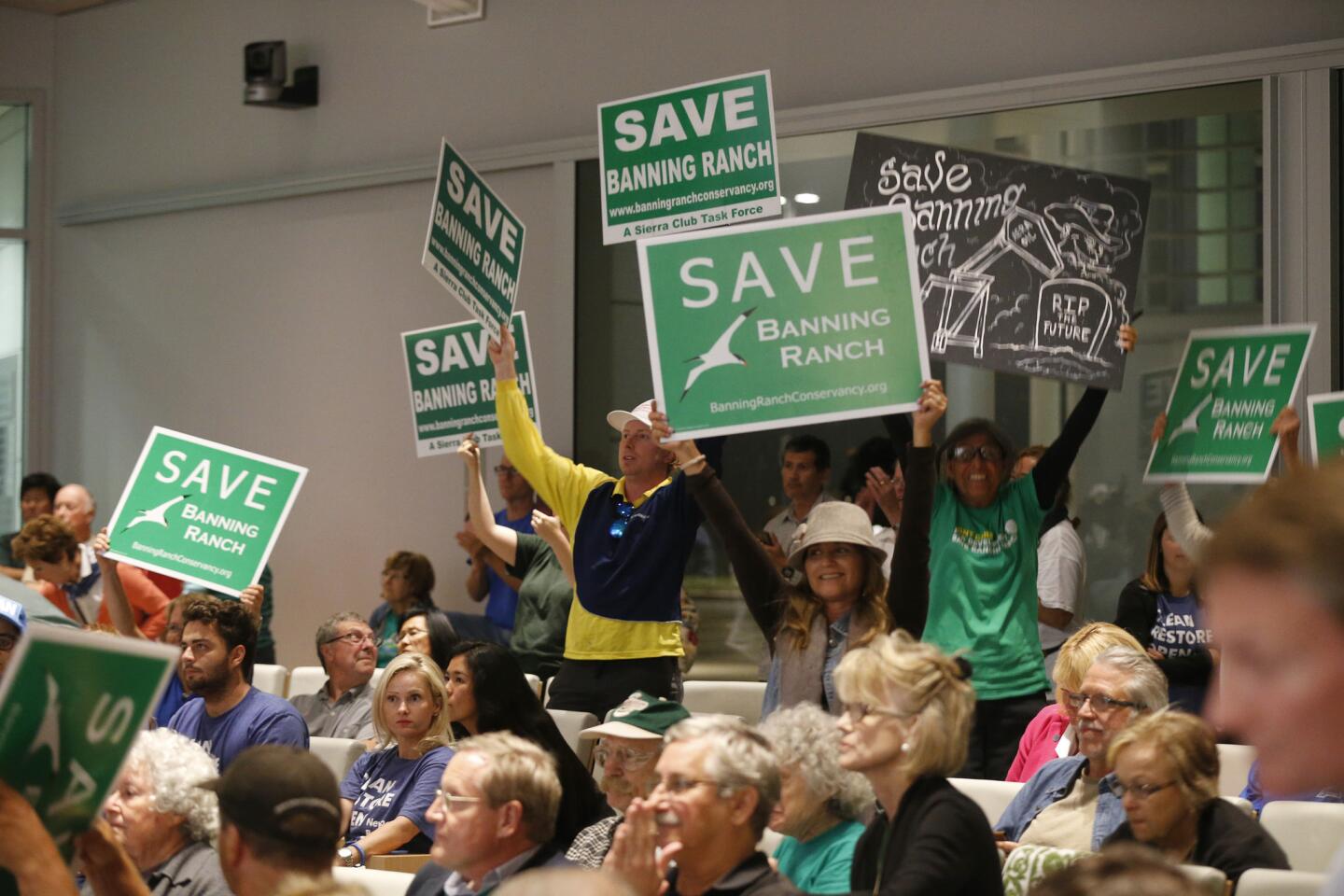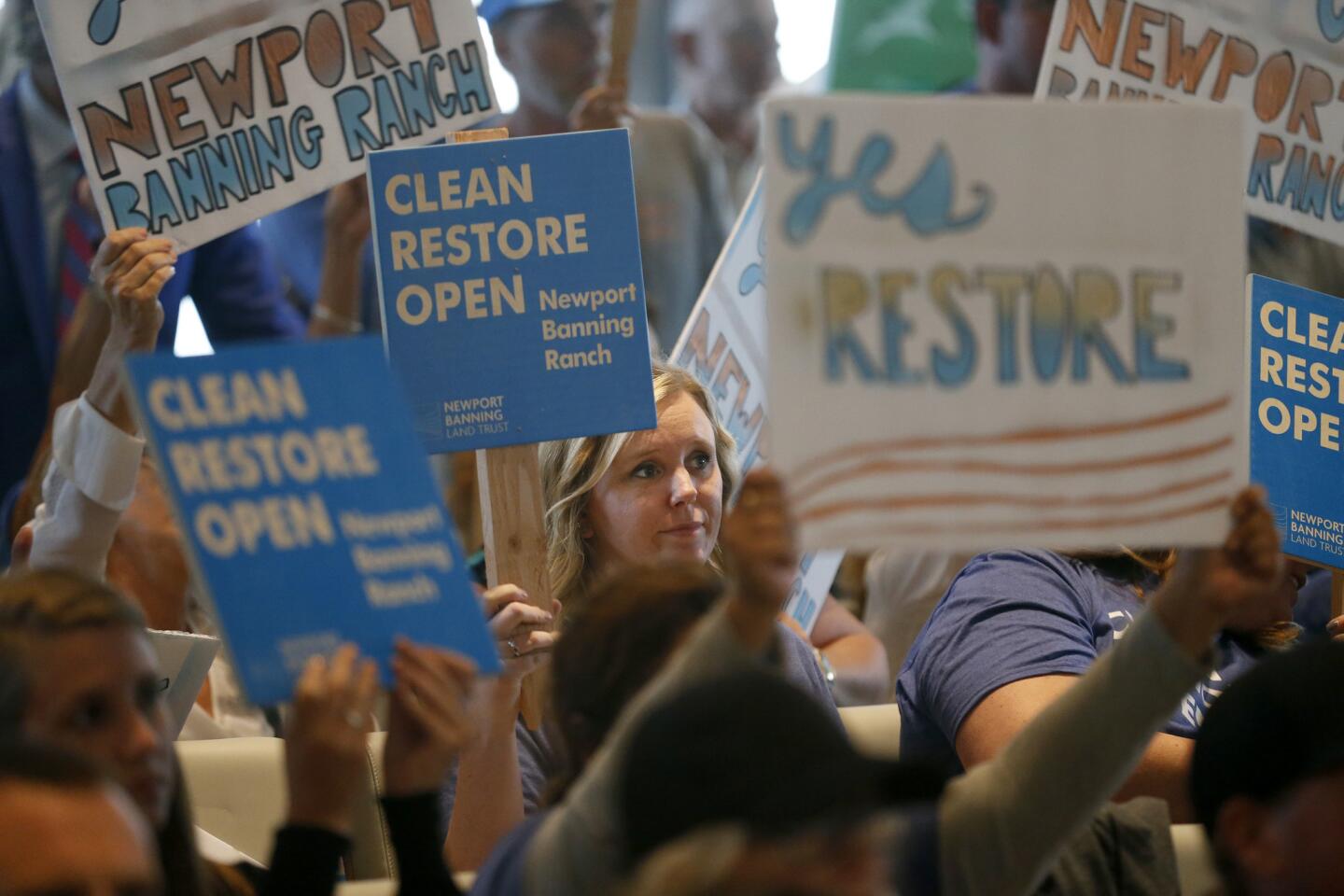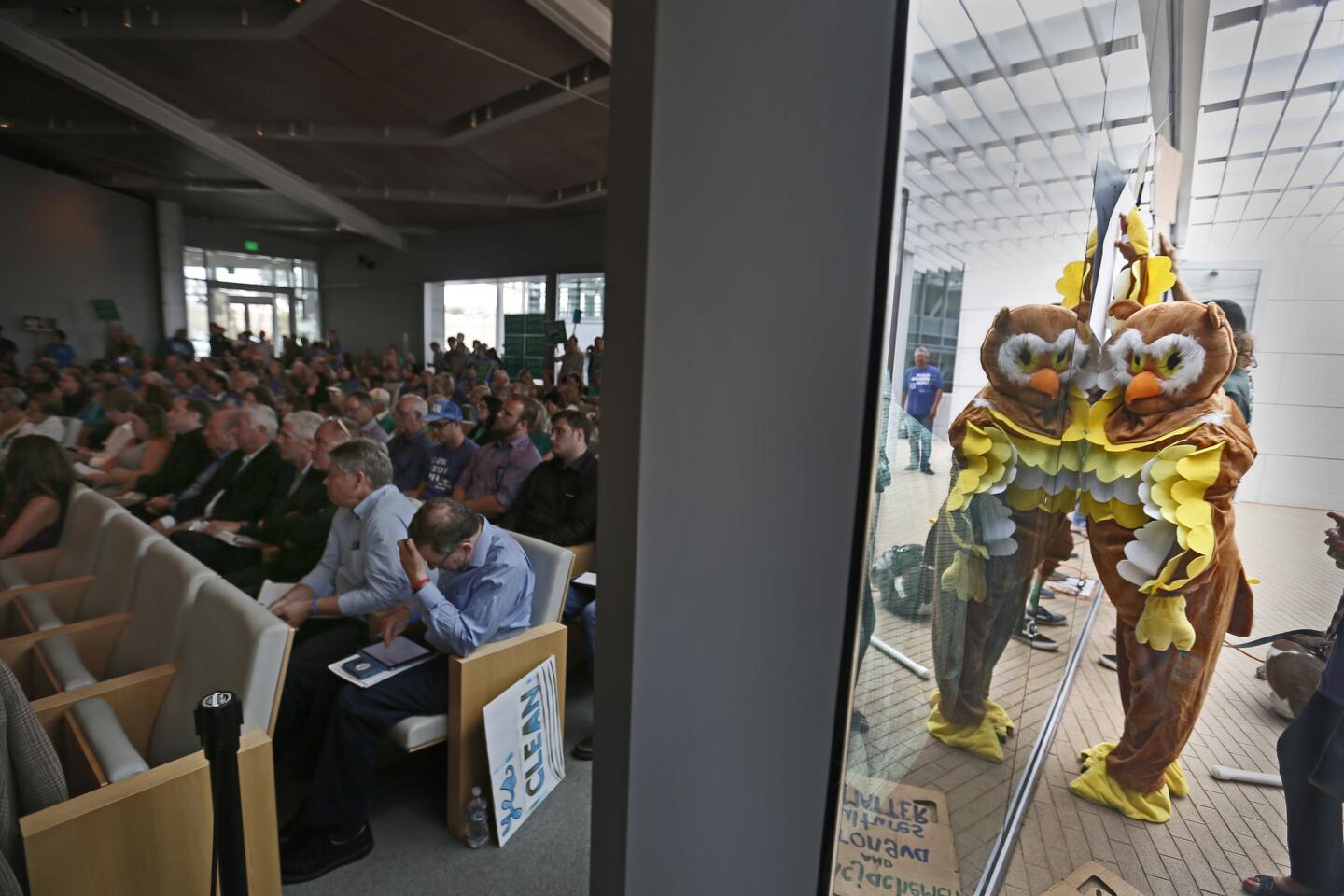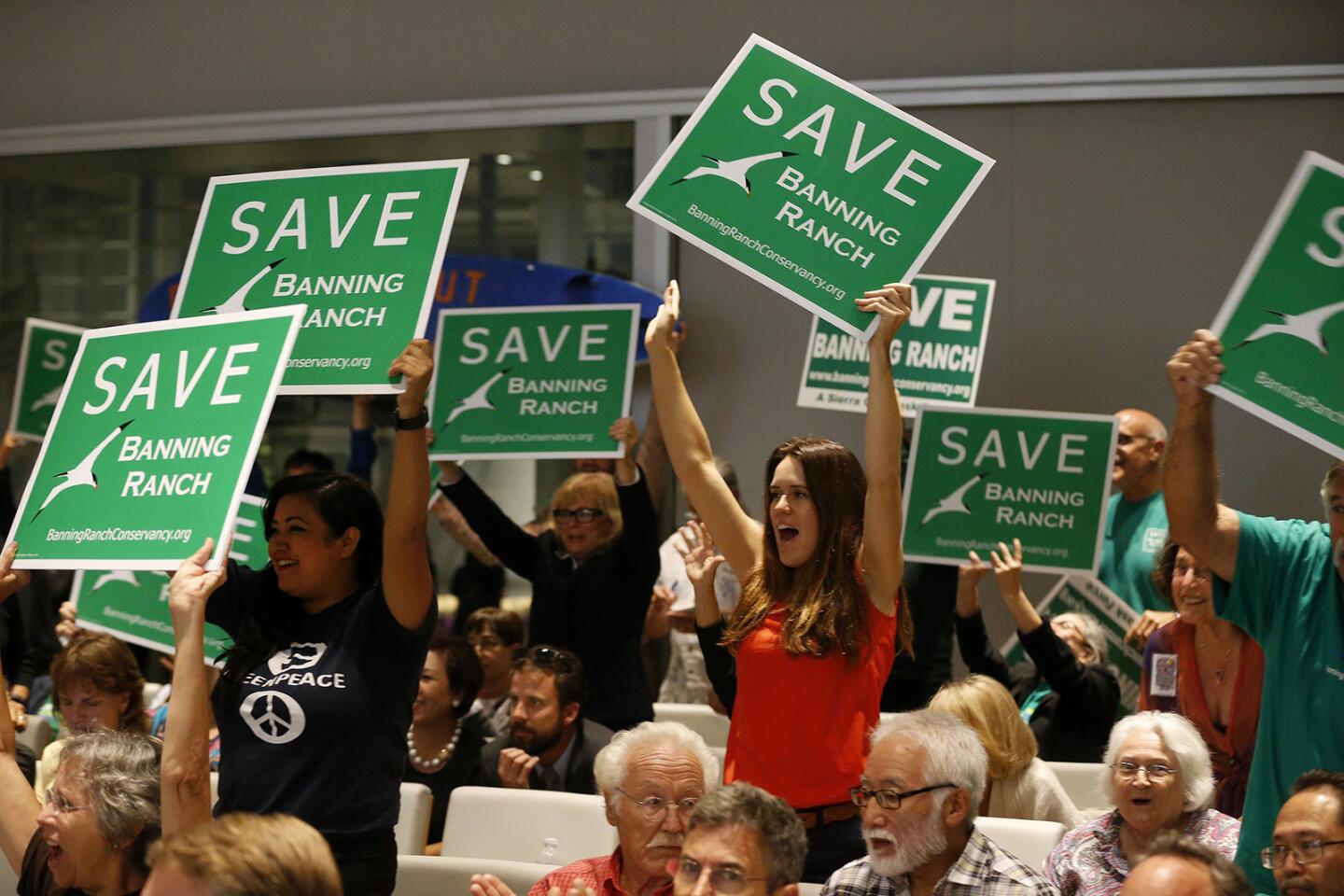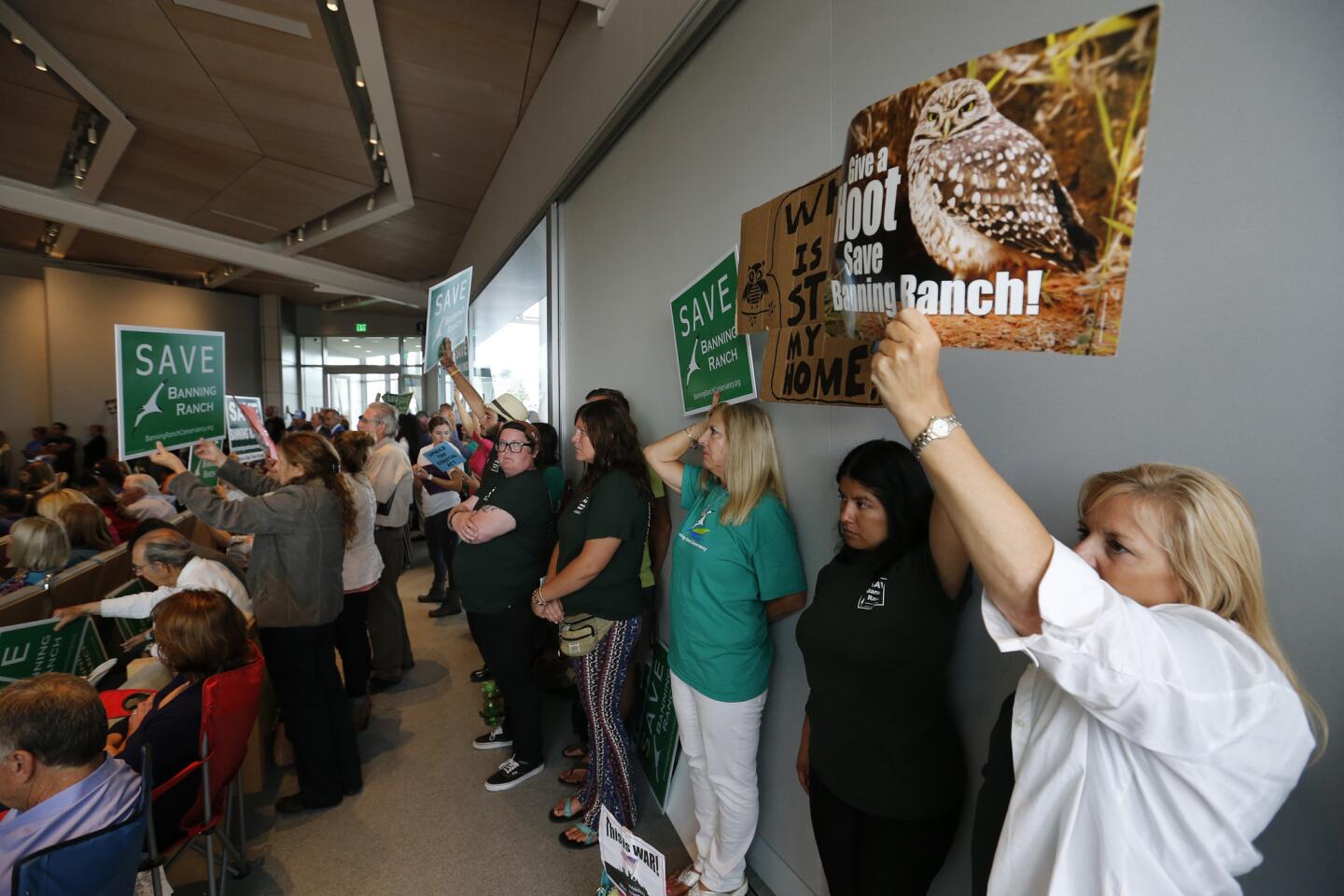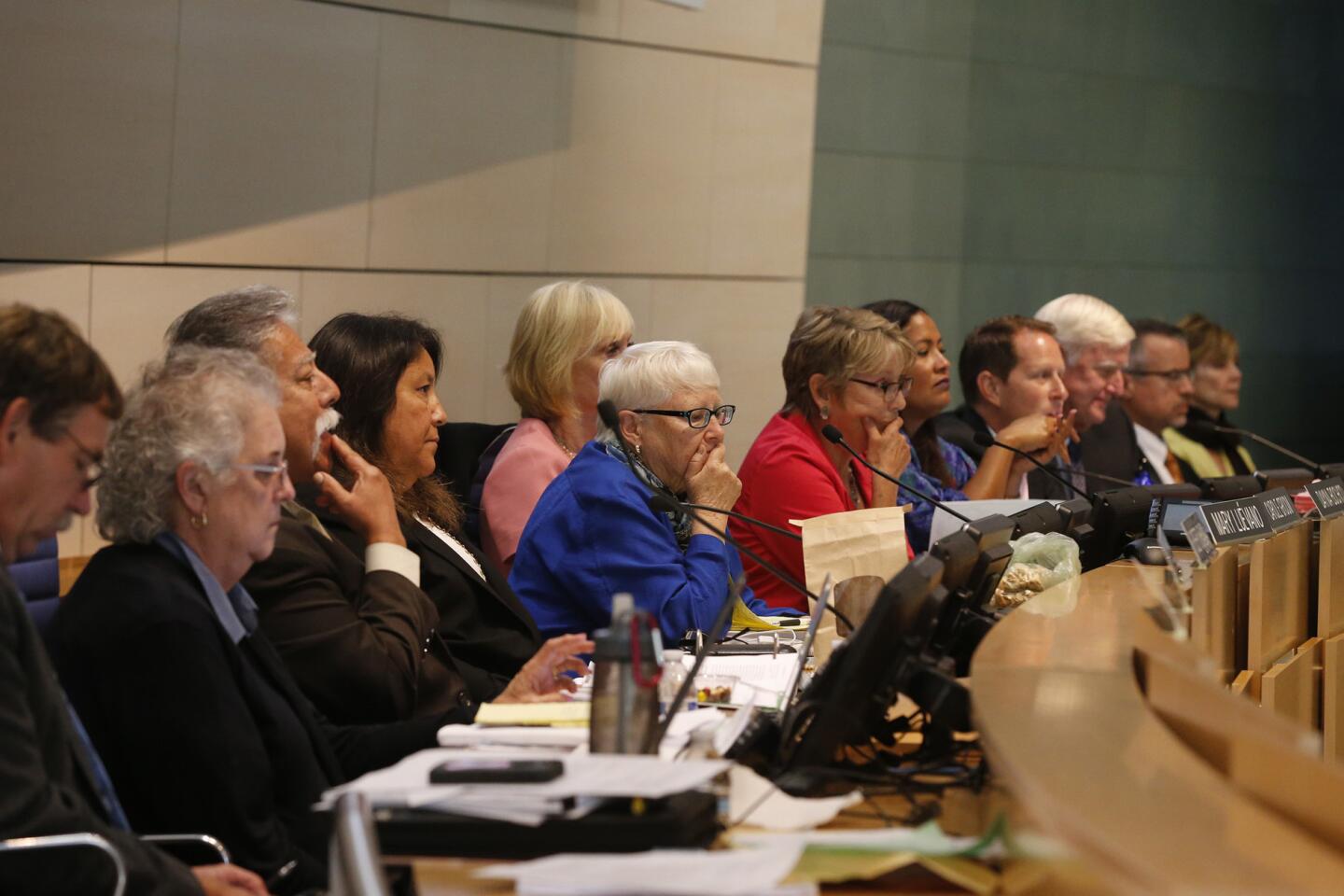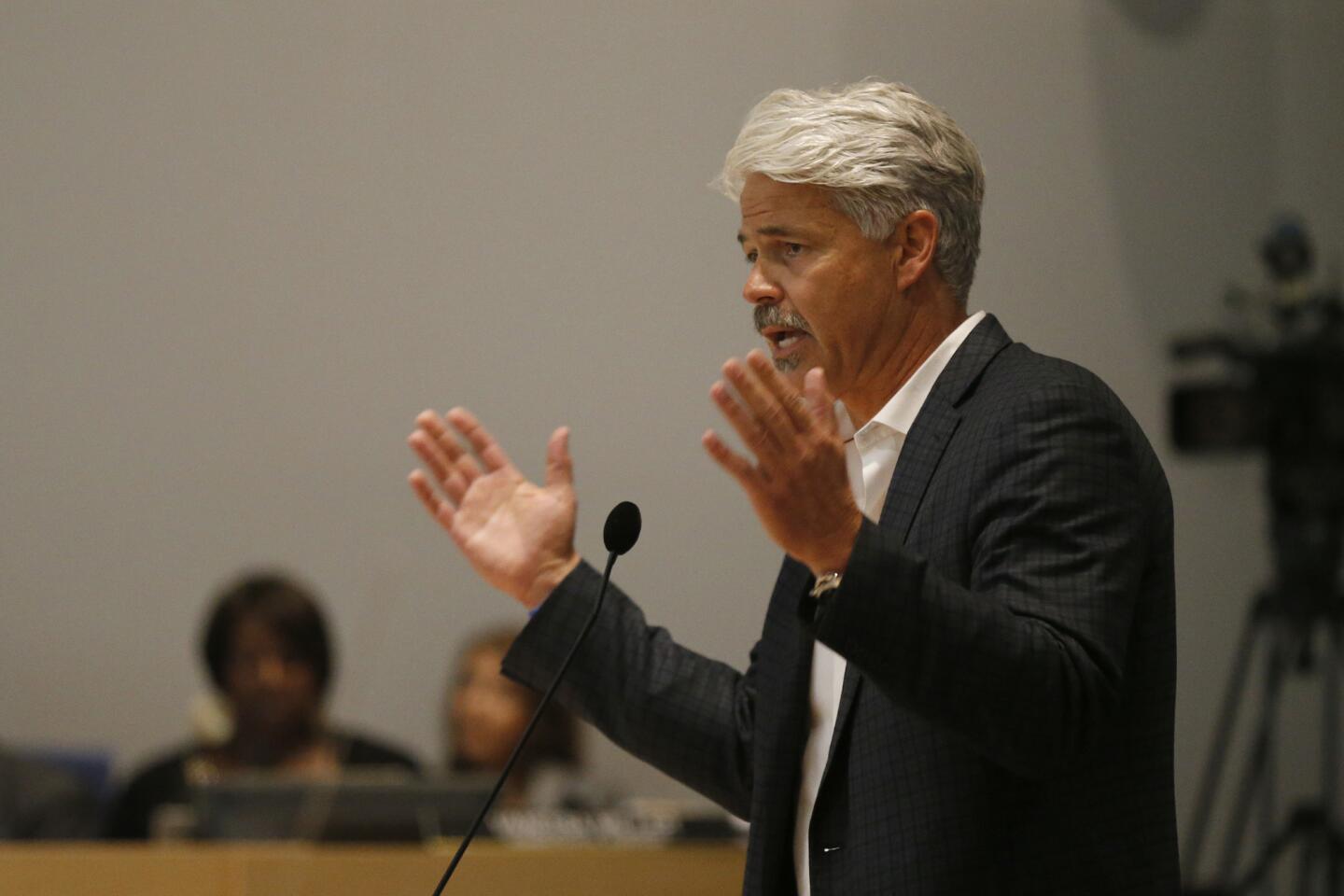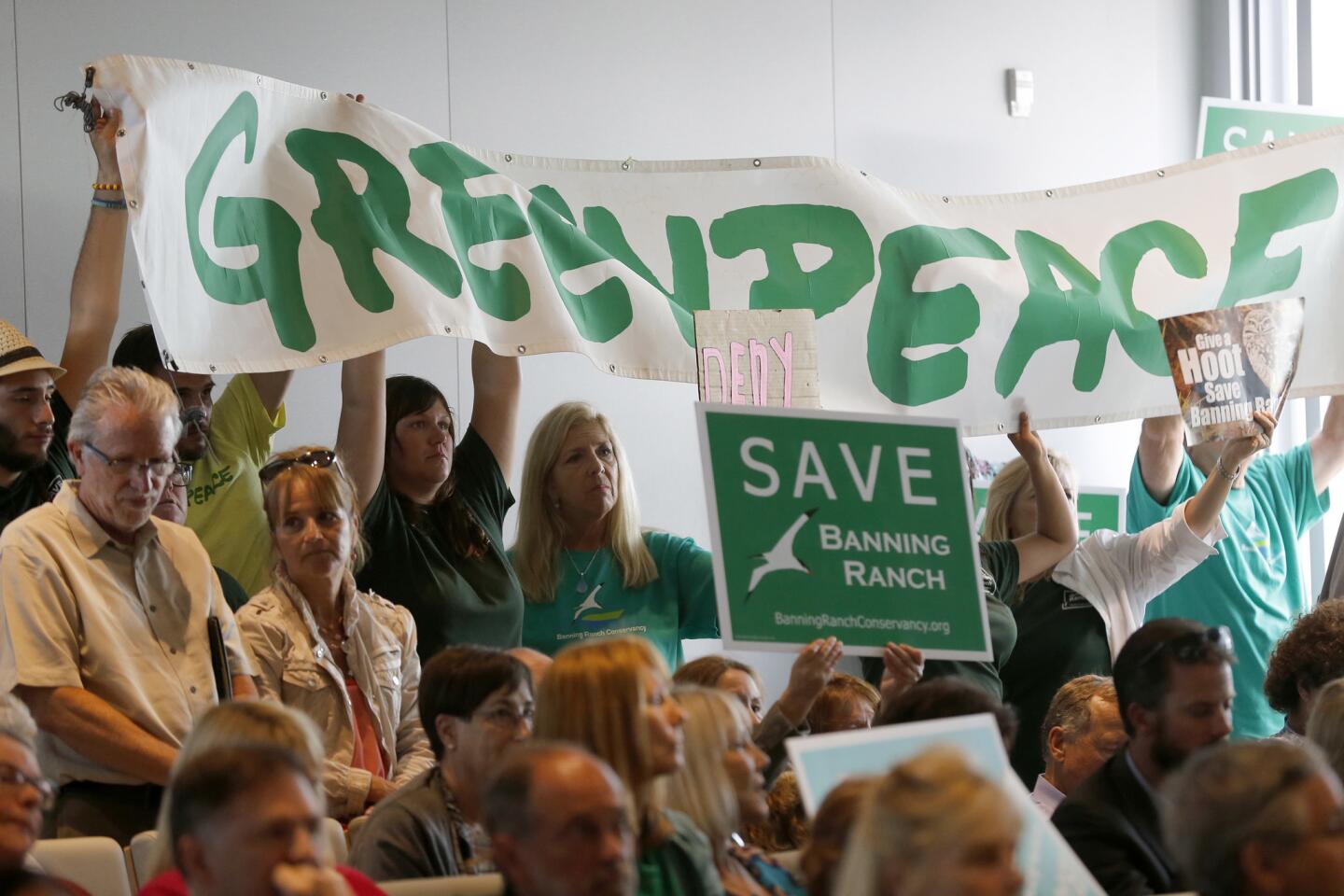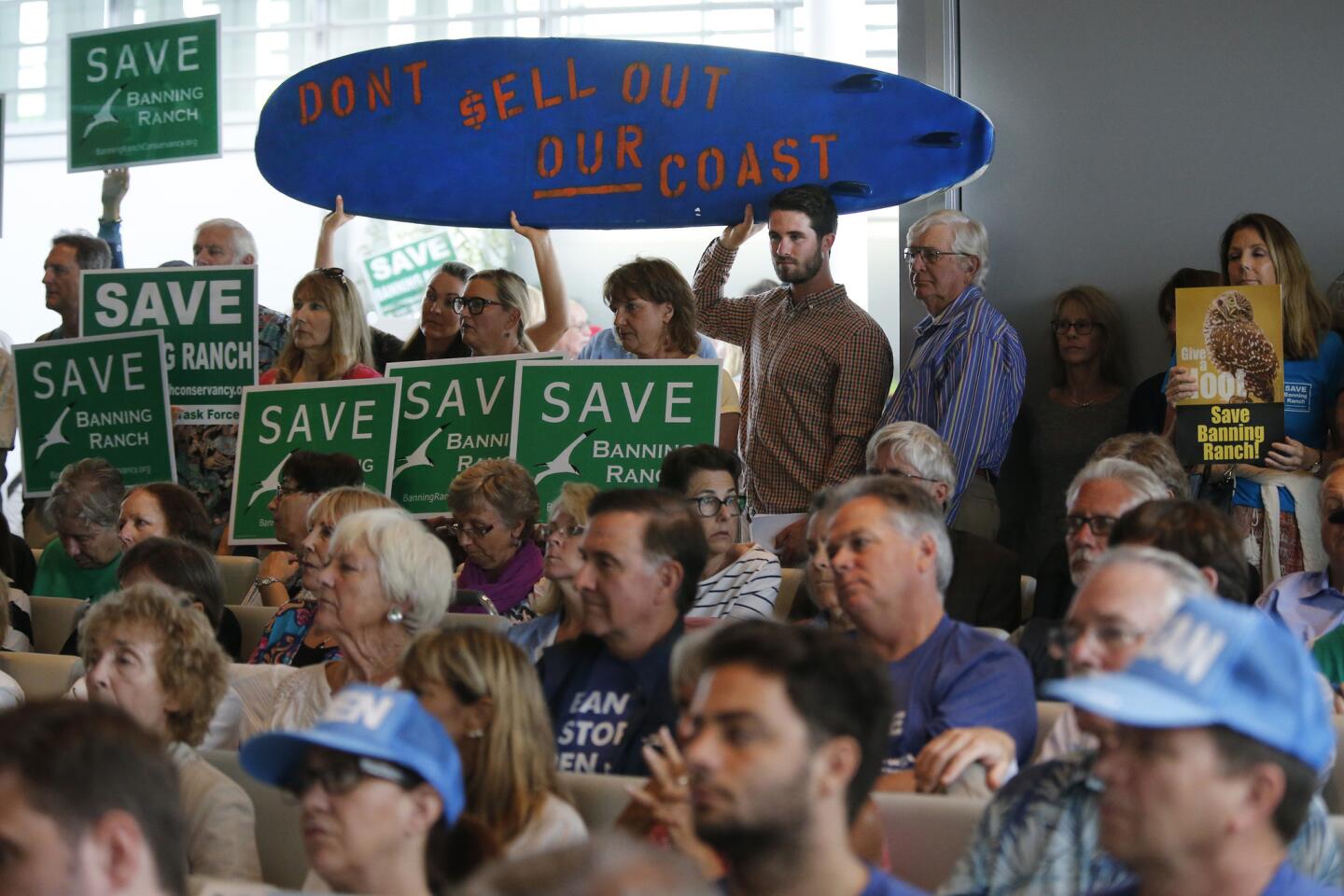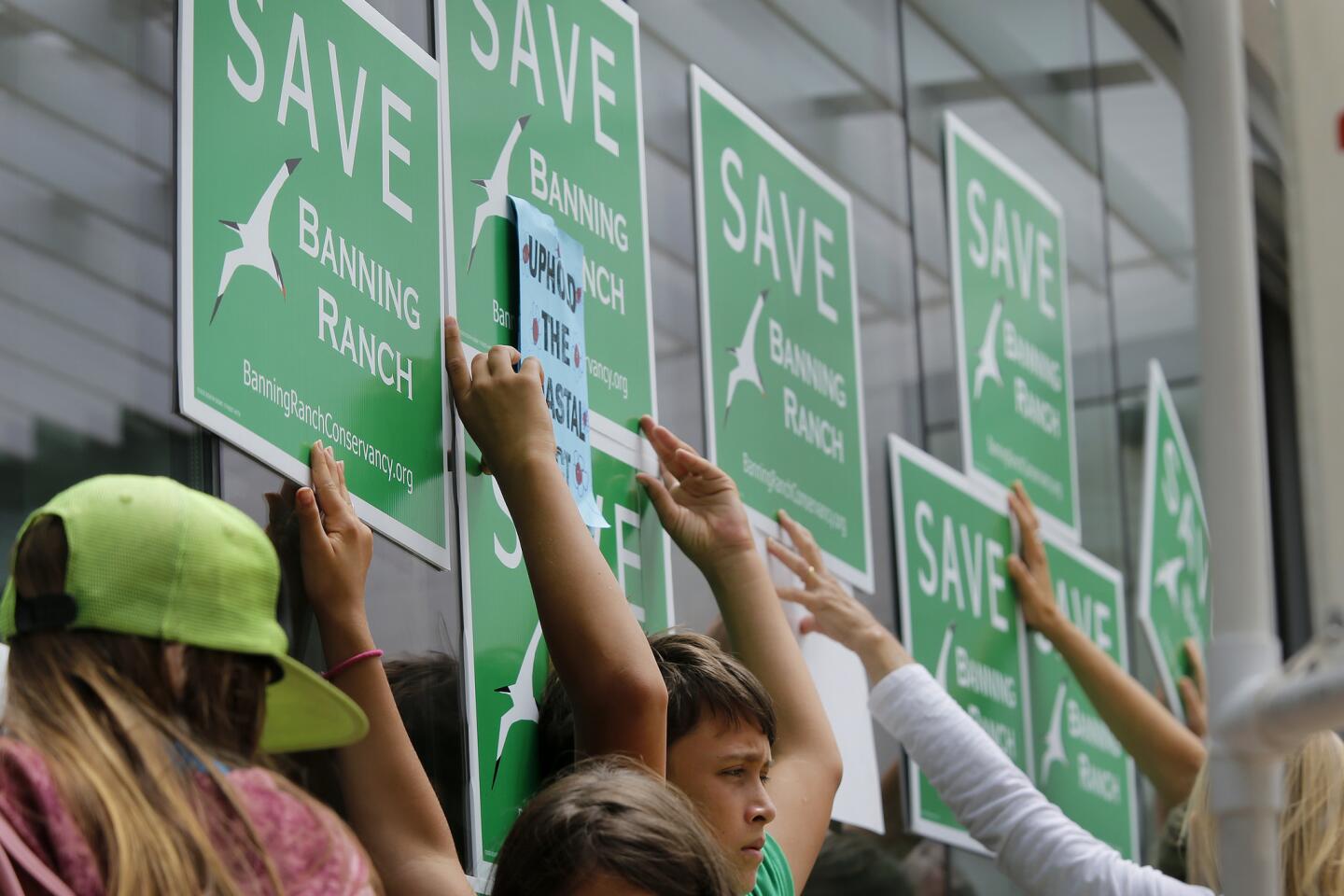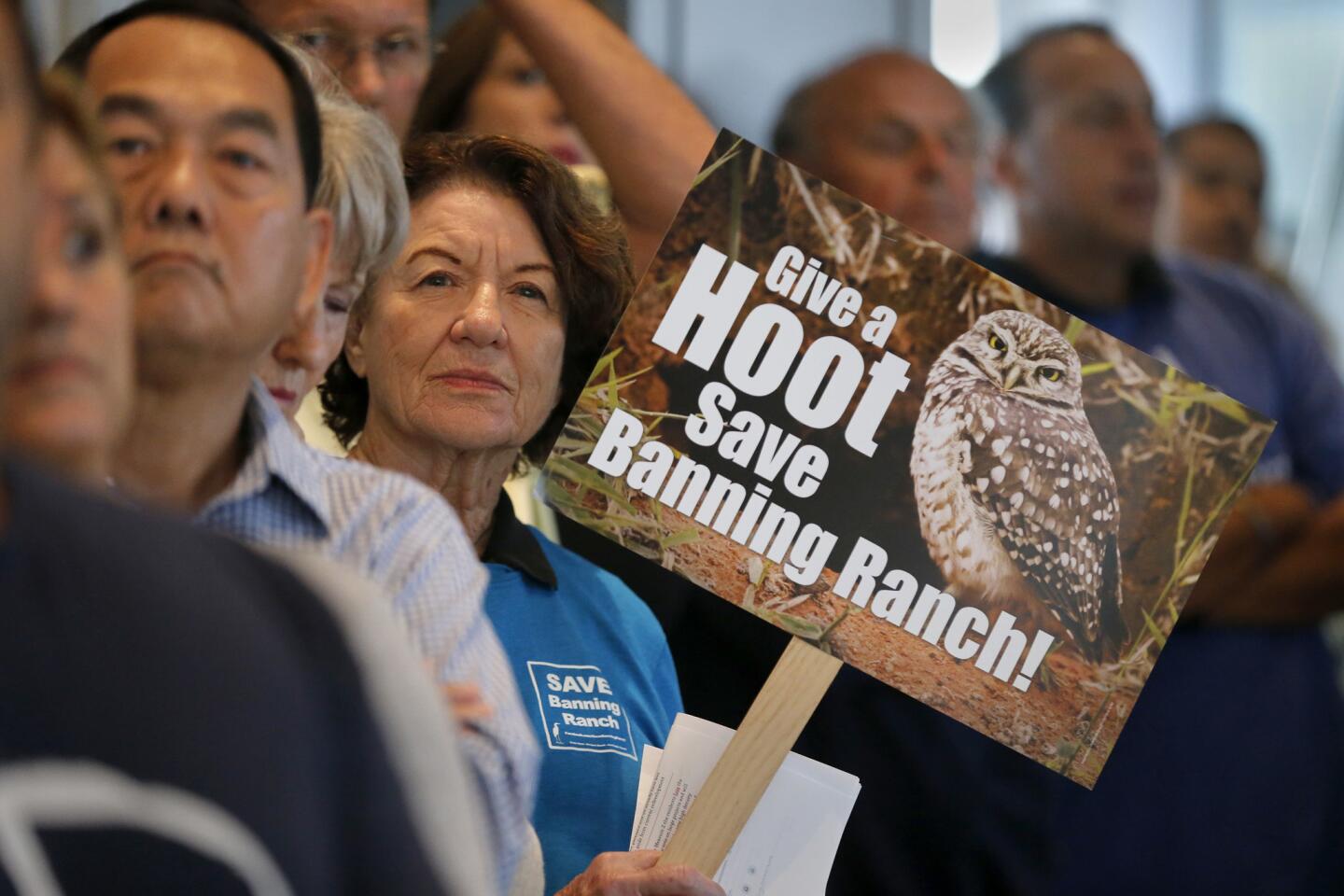Is the Banning Ranch proposal really dead? A look at where the O.C. coastal project goes from here
- Share via
In the end, it was indecision that led California coastal commissioners to reject one of the biggest development projects to go before the panel in years.
Faced with two vastly different versions of the Newport Banning Ranch proposal -- the developers’ plans for a resort hotel, shops and nearly 900 homes and the commission staff’s recommendations for roughly half that -- commissioners decided to just say no.
“There just isn’t an opportunity to get this right tonight,” Commissioner Mary Luevano said before the panel’s 9-1 vote late Wednesday in Newport Beach.
The chance for some development at Banning Ranch -- a sprawling oil field overlooking the ocean between Newport Beach and Huntington Beach -- is greater than the commission’s lopsided vote suggests. Even critics of the developers’ plan say some type of project is possible, but the size and scope of it remains an open question.
The developers have not signaled what their next move will be. In six months, they can return to the commission with a new proposal. Or they can sue. No one expects them to go away.
“We remain committed to the project,” Banning Ranch spokesman Adam Alberti said Thursday.
The vote came as the commissioners face intense public and media scrutiny in the wake of their February firing of Executive Director Charles Lester and environmentalists’ criticism that the panel -- the guardians of California’s fabled coast -- favor development.
That put the Banning Ranch vote under klieg lights. As commissioners debated the project after more than 11 hours of testimony and public comment at their monthly hearing, they repeatedly emphasized the need “to get it right.”
“On this particular project, because it was so public, they needed to be careful on this one,” said Sara Wan, an environmentalist who served on the commission from 1996 to 2011. “As to the future and whether they will continue to be careful, that has yet to be seen.”

Olga Zapata Reynolds of the group Saving Banning Ranch Together speaks about Wednesday’s vote.
The commission staff was also in the spotlight. Staff experts recommended denial of a bigger version of the Banning Ranch plan last year. Then, under pressure from commissioners to come up with a project that could be permitted, they pivoted this spring and recommended approval of a smaller development.
The retreat earned the staff sharp criticism from environmentalists, who complained it was bending Coastal Act protections to make more of the 401-acre tract available for development.
Then, two weeks ago, staff experts made another turn based on new assessments of how much foraging territory was needed for the burrowing owl, a state species “of special concern” that winters on Banning Ranch grasslands.
They recommended that only about 20 acres was suitable for development, eliminating the hotel, a main road from Pacific Coast Highway and roughly 400 residences.
Banning Ranch project manager Mike Mohler said Wednesday that the staff proposal was “an attempt to derail our project.” His attorney hinted at litigation, arguing the development curbs amounted to an illegal taking.
But the staff stood its ground, leaving the commission with a choice: Approve the staff proposal, which some on the panel thought was too limiting. OK the developer’s project, which some thought was too big and violated the Coastal Act. Or try, at 10 p.m., to hammer out a compromise.
“We are still very far apart,” Commissioner Mary Shallenberger said shortly before the vote. “There is a lot riding on this.”
Although he seemed to favor a larger project, Commissioner Roberto Uranga was the sole yes vote on a motion to approve the staff proposal.
Commissioner Wendy Mitchell was absent -- she informed staff she had another meeting to attend Wednesday. Chairman Steve Kinsey recused himself from the vote because he had failed to report, as mandated by the Coastal Act, a private meeting with Banning Ranch developers.
Complaints that commissioners have played loose with the reporting requirements continue to dog the panel, though they strongly deny doing anything wrong. As the commission began its meeting Thursday, five members were served with a lawsuit accusing them of violating the mandate that they promptly and fully disclose private ex-parte communications with developers, lobbyists, environmentalists or other parties interested in commission business.
Brought by a nonprofit watchdog group in San Diego, the lawsuit alleges that Commissioners Erik Howell, Kinsey, Martha McClure, Mitchell and Mark Vargas failed to properly report hundreds of their behind-the-scenes meetings during the last two years.
Steven Blank, a coastal commissioner from 2007 to 2013 and a critic of the current panel, doubted that the Banning Ranch vote signaled a new direction for one of the most powerful commissions in the state.
“When it cools down and the public isn’t paying attention, it will be business as usual,” Blank said. “The developer will come back in six months. This isn’t over. It’s all about the money. No way they are going to leave $1 billion on the table.”
The commission’s future direction, he added, will depend on whom commissioners select as the agency’s new executive director.
“Will it be a staunch defender of the coast like the commission once had, or someone who can check all the political boxes?” Blank said. “If it’s the status quo, then the commission will give away the future of the California coast.”
Twitter: @boxall
Twitter: @LADeadline16
ALSO
California becomes a global laboratory in fight against climate change
Hoping to head off ballot fight, Garcetti vows to bar private developer meetings
Rising homelessness and lack of psychiatric care beds are cited in surge of mental competency cases
More to Read
Sign up for Essential California
The most important California stories and recommendations in your inbox every morning.
You may occasionally receive promotional content from the Los Angeles Times.
